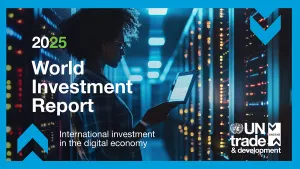The pharmaceutical industry is in the midst of a fundamental transformation. Scientific breakthroughs, digital acceleration, and shifting patient expectations are not only redefining drug development but are also rewriting the rules of workforce planning. For HR leaders, the challenge is clear: to build a workforce that is as agile and multidimensional as the business itself.
Namita Patwari, Chief Human Resources Officer at Alembic Pharmaceuticals, offers a lens into this evolution. Under her leadership, Alembic has embraced a talent acquisition strategy that goes far beyond filling vacancies. It’s about calibrating talent to complexity—aligning individuals not just to roles, but to purpose, environments, and
future demands.
Also Read: Intel begins layoffs with 107 roles slashed, up to 20% cuts expected in factories
In a wide-ranging interview with People Matters, Patwari shared how the company is adapting its approach to recruitment, skilling, and retention to meet the growing sophistication of pharmaceutical roles. Her insights reveal an industry quietly reinventing how it defines, attracts, and nurtures talent.
Hiring for alignment, not just aptitude
Gone are the days when hiring in pharma was primarily a check-box exercise of academic qualifications and experience. “We’ve moved beyond conventional hiring parameters,” Patwari says. Today, Alembic’s approach is far more insight-driven, with psychometric assessments like DISC and Hogan becoming embedded in its hiring playbook.
These tools offer more than surface-level profiling—they assess behavioural patterns, cognitive agility, and adaptability. In an industry where both compliance and creativity are critical, such multi-dimensional assessments help answer questions beyond, “Can they do the job?” Instead, the focus is shifting to, “Will they thrive in our context? Will they enjoy doing it here?”
It’s a subtle but powerful shift: hiring for resonance, not just readiness.
Alembic’s sourcing strategy is also becoming more proactive. “We no longer wait for CVs to come to us,” Patwari explains. The company has intensified its engagement with academic institutions—offering student projects, industry talks, and mentorships that begin well before the job search phase.
This approach achieves two things. First, it gives students a realistic preview of the sector—often demystifying pharma’s perceived rigidity. Second, it allows Alembic to spot and nurture potential early, particularly in niche or technical domains where competition for talent is high.
In a sector marked by specialisation—be it in regulatory science, clinical trials, or digital therapeutics—early engagement becomes a form of strategic workforce planning.
Reimagining frontline recruitmentWhile R&D and regulatory teams often receive the spotlight in discussions about pharmaceutical skills, Patwari draws attention to an equally vital engine: the frontline.
“Our business has expanded across therapies and geographies,” she notes, “and we’ve steadily increased hiring at the grassroots.” The traditional medical representative is no longer just a product evangelist; they’re evolving into consultative partners, tasked with translating complex clinical data and engaging meaningfully with healthcare professionals.
This role evolution demands a different recruitment lens—one that prioritises digital fluency, adaptability, and communication acumen alongside medical knowledge. It also calls for internal mobility. Through the Alembic Edge programme, field executives are now progressing into leadership, not by default but by design—through upskilling, mentoring, and stretch assignments.
Additionally, the company’s recruitment ecosystem has undergone a digital overhaul, yet it retains a human core. At the heart of this system is Empower, the company’s integrated HRIS and applicant tracking platform.
“Empower allows for faster, data-informed decisions,” Patwari explains. It streamlines everything from job posting to offer rollout, while capturing valuable analytics on candidate sourcing, conversion, and feedback loops.
Also Read: Walmart to lay off nearly 400 workers in August
Complementing this is AskTara, Alembic’s in-house AI-powered chatbot. Designed to support onboarding and employee queries, it offers real-time guidance on everything from policy questions to internal assessments—freeing up HR bandwidth while improving responsiveness.
The takeaway? Technology is enabling scale, not replacing substance. Alembic’s systems are designed to enhance transparency and experience—for both candidates and recruiters—while maintaining the integrity of relationship-driven hiring.
Flexible work in a lab coat world
In a sector rooted in physical presence—labs, production floors, quality control units—flexibility looks different. But Alembic has found ways to infuse empathy into rigidity.
Work-from-home options for menstruating employees, reduced shift hours, and compensatory leaves for holiday work are all part of a broader philosophy: that flexibility isn’t just about location, but about context, compassion, and choice.
“We want to support individual needs within business realities,” says Patwari. That includes offering paternity and bereavement leave, pulse surveys to check cultural health, and ongoing leadership engagement.
The next chapter of pharmaceutical work will demand a dual mindset—one that blends scientific rigour with digital dexterity. Patwari believes the role of the pharma representative, for example, is already shifting from dissemination to consultation. “They’re becoming trusted advisors—more comfortable with data, more digitally fluent,” she says.
The same is true for R&D, regulatory affairs, and pharmacovigilance. As AI and analytics enter these domains, technical specialisation must now be paired with data literacy and cross-functional agility.
To meet this, Alembic is recalibrating its employer branding, sharpening its talent mapping against competitor benchmarks, and investing in reskilling-as-retention.
“We’re linking learning to career progression,” Patwari explains, positioning skilling not as a standalone initiative, but as an embedded part of workforce evolution.
Innovation grounded in context
When asked what advice she has for fellow HR leaders in pharma, Patwari is pragmatic. “Not every trending HR solution is right for your business,” she says. “Tailor innovation to your context.”
That context starts with understanding the business—not from a quarterly review deck, but from the ground up. “Spend time on the floor. Listen to field reps. Sit in on a lab huddle. You can’t build a workforce you don’t understand.”
And often, she adds, the most meaningful interventions aren’t programmatic—they’re personal. “It’s the phone call from a manager after a tough week. The flexibility granted when it matters. Those invisible experiences build long-term commitment.”
The pharmaceutical industry holds a distinct advantage in the talent conversation: its work is inherently purposeful. From clinical innovation to life-saving access, employees contribute directly to public health. But this story is often underplayed in hiring.
For Patwari, bringing that narrative to life is central to attraction and retention. “Employees, especially Gen Z, want to see how their work connects to something bigger.”
This means reframing onboarding as storytelling, shaping career paths that reflect individual aspiration, and using data to personalise support across age groups—from Boomers to Gen Z.
And it’s not just about motivation—it’s about meaning. “We’re in a sector where the end goal is patient impact. That’s our differentiator. HR’s job is to help people feel it.”
Strategy is no longer behind the scenes—it’s centre stage
As the pharmaceutical sector navigates everything from global health challenges to AI disruption, its future will be shaped not just by scientific breakthroughs—but by the people it empowers to deliver them.
Alembic’s approach shows that
modern talent acquisition in pharma is not about filling roles, but about shaping futures. It’s about building a workforce that is not only skilled but also engaged, adaptable, and aligned to purpose.
In this new landscape, the companies that will lead are those that see HR not as a function, but as a strategic architect of resilience and growth.
And in that architecture, talent is not just an input. It is the engine.
#FutureOfWork
#CHROLeadership
#PharmaWorkforce
#WorkforceTransformation
#HRInnovation
#PeopleStrategy
#DigitalHR
#TalentInPharma
#EmployeeExperience
#FutureReadyWorkforce
Human Resources Management Awards
website Link :
humanresourcesmanagement.orgNomination Link :
humanresourcesmanagement.org/award-nomination/?ecategory=Awards&rcategory=AwardeeContact Us :
contact@humanresourcesmanagement.orgFollows On :
Youtube :
www.youtube.com/@humanresource-u1hTwitter :
x.com/resources185061Blogger :
humanresourcesmanagement14.blogspot.comPinterest :
in.pinterest.com/resources737Facebook :
www.facebook.com/people/Human-Resources-Human-Resources/pfbid0MSGu8YPWMiRigLKeNJ7GStPWdwSGxie7zXbFfCXgohcxKYvmxfaRXCBcuV8pAKQwlInstagram :
www.instagram.com/reso.urces34
















.png)
